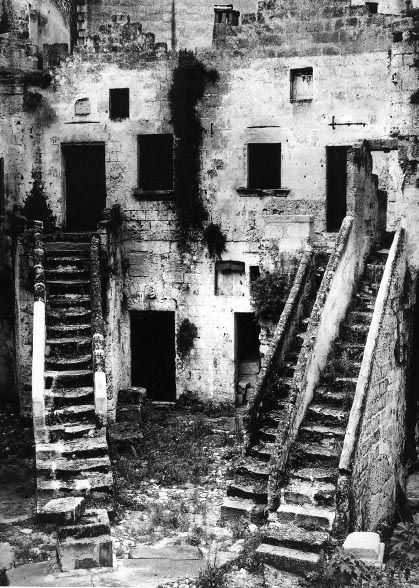
We stumbled on this little “Vicinato” (neighborhood) A few years ago in the then abandoned cave dwelling area of Matera, Italy. Astonishingly, at one time, in the late nineteenth century this courtyard and its attached dwellings were home to over one hundred inhabitants. The families were large, mothers often having a dozen or more children to counter the odds of childhood death due to disease and malnourishment.
In such dire circumstances we would expect the role of architecture to be useless, peripheral, and unaffordable. Look a little more closely at the photo, especially at the railing/wall between the conjoined stairs which lead up to two dwellings. Right there, whoever built that stair understood something of the critical role architecture plays in giving form (as in order) to society. The builders, acknowledging the importance of social order, especially in such close bound circumstances, made adjustments to the rail separating the two stairs. Instead of the rail staying the same height, it was built so as one climbed the stair the degree of privacy was adjusted. At the courtyard the stairs start their rise from different points, a subtle perhaps accidental degree of separation. As the stairs climb, the rail rises to slowly separate the two families first bodily and finally from view. This small detail speaks volumes about privacy, grace, respect and the rich territory of negotiation between private and public life.
We’ve become accustomed to thinking of architecture as fashion, style, somehow separate from the essential fabric of society. We take the functioning of our social order for granted, because it more or less works. The built environment forms that order no less than our laws, customs and cultural practices, but is too often overlooked, in the dash to build more office parks, highways, malls, and suburbs.

Recent Comments